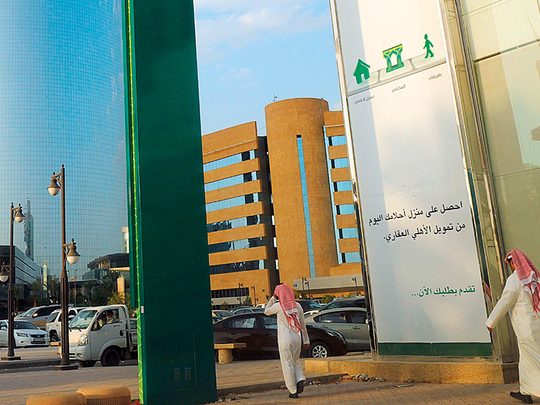
Dubai
Saudi Arabia’s banking sector is expected to report improved lending growth in the next two years driven by higher government spending and recovering oil prices, but the rising interest rates could become a damper in the expected credit growth, according to analysts
The Saudi Arabian Monetary Authority (SAMA) raised its benchmark repo (lending) and reverse repo (deposit) rates on last week. Both benchmark rates were increased by 25 basis points (bps), bringing the repo rate to 2.25 per cent and the reverse repo rate to 1.75 per cent.
The rate hikes ahead of the anticipated Fed rate hike this month points to SAMA’s plans to keep the rates in tandem with the US rates is expected to keep the credit growth low despite ample liquidity in the system.
“We believe that the higher interest rates will act as a further headwind to domestic demand. With the expected rises in the repo and interbank rates, we see the rate hiking cycle having a greater market impact in 2018 than in 2017 when the interbank rate moderated at the beginning of the year and then stabilised,” said Monica Malik, Chief Economist of Abu Dhabi Commercial Bank.
Rating agency Moody’s last week projected the lending growth to pick up to 4 per cent in 2018 and to accelerate further in 2019, following a 1 per cent contraction in 2017 due to low credit demand. In 2017, banks’ asset growth was mainly driven by higher investments in domestic government debt issuances.
Recovering oil prices and record budgeted expenditure in 2018 are likely drivers of credit demand in 2018 and 2019. Recovery in credit growth could however be hampered by a rise in borrowing costs.
“While lending growth to corporates will increase gradually, consumer lending expected moderate as inflation rises. We expect Saudi banks to continue focusing on higher-margin retail lending, which accounted for around 34 per cent of total bank credit as of December 2017, and has grown by an average 11 per cent annually since 2010,” said Olivier Panis, Vice-President and Senior Credit Officer at Moody’s.
While consumer lending will remain limited in 2018 and 2019, analysts expect home loans to support banks’ retail lending activity. Despite government efforts to protect consumers from the introduction of VAT, higher energy prices and weak labour market, it is expected that these changes to erode Saudi households’ disposable income in 2018.
Despite the expected slow growth in consumer lending retail real-estate lending, including home loans are expected to continue to grow over the coming 12-18 months. Growth in home finance will be fuelled by various initiatives supportive of the National Transformation Program (NTP)’s objective to boost home ownership among Saudi citizens to 60 per cent by 2020 from 50 per cent and to increase residential real estate financing from banks to 15 per cent of total lending by 2020 from around 9 per cent currently.
Problem loans
Analysts expect Saudi banks’ ratio of problem loans to gross loans will increase to around 2.5 per cent in the next 12 to 18 months, from 1.8 per cent as of December 2017. Fiscal consolidation measures and slowing economic growth have affected banks’ asset quality since global oil prices fell sharply in 2014.
Asset quality pressures will continue to rise in both the corporate and consumer sectors. “The construction sector has historically been the largest contributor to banks’ problem loans, and we expect it to remain under pressure as some government-backed construction projects will take time to materialise. As a result, we expect the sector’s NPL ratio to increase to around 5 per cent of total loans in the next 12 to 18 months from around 3.9 per cent at year-end 2017.
Subdued economic growth and inflationary pressures are also weighing on the commerce sector. Banks reported an NPL ratio of around 2.1% in 2017 for the sector, and Moody’s expect this to increase to around 2.5 per cent in 2018. Problem loan formation in the consumer segment has historically been low, with a reported consumer NPL ratio of less than 1 per cent since 2012. However NPL ratio is expected to rise to 2 per cent reflecting pressure on consumers’ disposable income as a result of the introduction of VAT, energy subsidy cuts and rising interest rates.













